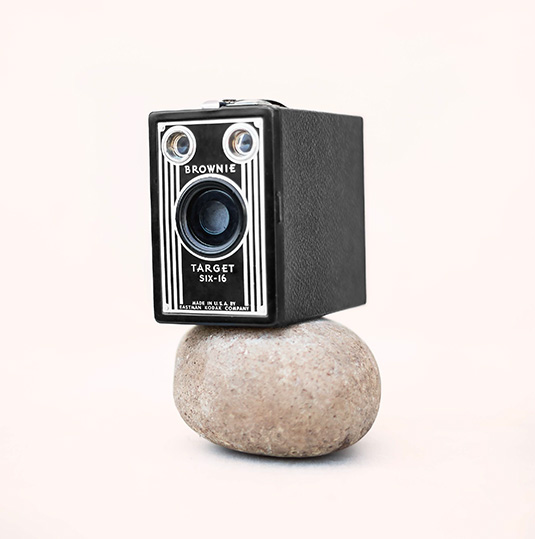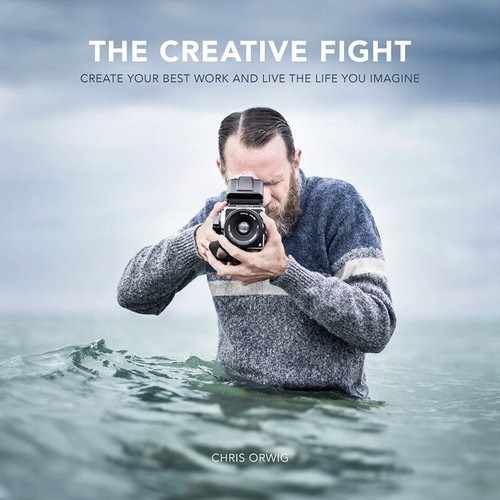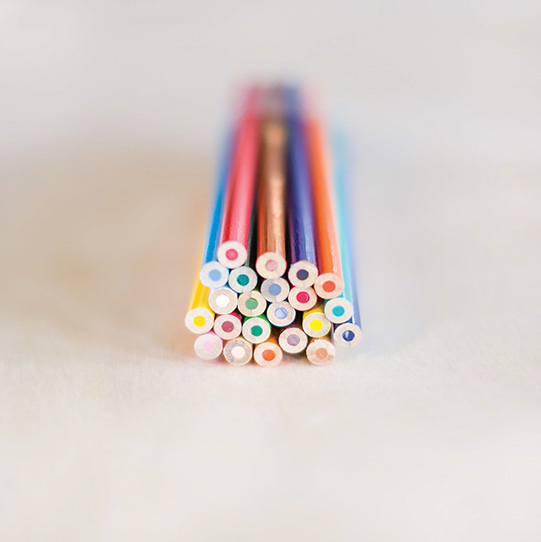Chapter Thirty-One. The Power of Play

When George Eastman introduced his camera, the Brownie, all the other cameras were awkward, imposing, and huge. Eastman’s camera had a friendly face. It was a curious little box that promised fun. The camera cost only $1 and wasn’t hard to use. As the marketing slogan said, “You press the button and we do the rest.” The Brownie was a huge success—it was the GoPro of 1901.
The original Brownie and the GoPro gave ordinary people the ability to savor and celebrate life. Life moves so fast; cameras help us slow it down. And making photographs helps us remember and cherish those special moments before they fade. The challenge for most photographers is not conjuring up the desire to make pictures but taking the time and putting in the effort to learn how to use the tool.
Little Boxes Can Be Lots of Fun
In comparison to their counterparts, the Brownie and GoPro were laughable little boxes that had hardly any features at all. Without all the serious features that photographers had come to expect, these cameras seemed less like tools and more like toys. The elitists scoffed, but the amateurs picked up these magic boxes and started to have fun. The secret to the wild success of such cameras was the features they didn’t have.
Fun and simple cameras have broad appeal. Consider the iPhone, the most popular camera in the world. Even my 3-year-old knows how to take photographs and scroll through the frames. And without the worry of making a costly mistake, the camera becomes an extension of who we are. Without the burden and expectation that comes with heavy and expensive gear, the photographer stops being so concerned. And without the pressure of performing, we become more relaxed. When we let go of our self-critical bent, we take more risks. The self-imposed stress melts away, and creativity ignites like a sparkler on the 4th of July.
Picasso famously said, “The chief enemy of creativity is common sense.” Common sense is a con artist that steals growth and joy. Most of us have bought into its lie and become too practical in our old age. We’ve stopped playing like we used to when we were kids. But nobody hits the bull’s-eye on the first try. It takes multiple tries and a quiver of arrows in order to achieve that goal. But we grow up and forget—especially when we get an important job. The more important the job, the more we justify our stress. So we get serious, grit our teeth, and furrow our brow. But with such stress it’s nearly impossible to iterate, experiment, and learn.
Lead Versus Ink
When it comes to creative growth, the pencil is mightier than the pen. The pencil allows us to doodle, sketch, play, iterate, and test out new ideas. Those who practice a creative art know that such iteration and practice is essential for growth. The musician practices a riff. The writer goes through rough drafts. The painter sketches her ideas. The poet jots down a few lines. The most productive practice happens when we can block out the critical voices in our heads. Practice makes perfect only if we feel safe.
When asked about learning to act, the actor Ewan McGregor said, “The best thing about going to acting school was that it was a place that you could make a mistake and it wouldn’t affect your next job.” We all need schools, studies, sanctuaries, labs, and practice rooms where we can let down our guard in order to try out new ideas.
The neuroscientist Dr. Stuart Brown says, “Nothing lights up the brain like play.” When we play we worry less and the creative juices flow without any effort at all. Play diminishes stress and helps us relax. Play and work are similar; it’s just that play is more fun. And don’t make the mistake that play isn’t profound.
According to the American Academy of Pediatrics, “Play develops imagination, dexterity, and physical, cognitive, and emotional strength.” But play isn’t just for kids, nor is it about playing foosball at work. Play involves/requires a mental shift that changes how we approach our work. And it isn’t just for those in overtly creative fields. Whether you are a supervisor or a scientist, play can help you grow. As Einstein once said, “Play is the highest form of research.”
CREATIVE PEOPLE ARE CURIOUS, FLEXIBLE, PERSISTENT, AND INDEPENDENT WITH A TREMENDOUS SPIRIT OF ADVENTURE AND A LOVE OF PLAY.
— HENRI MATISSE
You Can’t Play in Your Grave
The opposite of play isn’t work. It’s more like apathy or something worse. Some, like Dr. Brown, believe that the opposite of play is depression, whereas others think it’s more like death. Whatever we call it, without play life is bleak and dull. The trouble is that we play less and less as we age. George Bernard Shaw put it this way: “We don’t stop playing because we grow old; we grow old because we stop playing.” In his research, Dr. Brown found this to be more than just a catchy idea. Brown concluded, “When we stop playing, we start dying.” Play isn’t just a game; it keeps us creative, flexible, and young.
But too often, as we grow up the creative spark falters and the more self-critical and self-conscious we become. When we’re comfortable in our own skin, like we were as kids, the spark shines strong. Harvard psychologist Maria Konnikova puts it like this: “Insight may seem to come from nowhere, but really, it comes from somewhere quite specific: from the attic and the processing that has been taking place while you’ve been busy doing other things.” That’s why good ideas come to us in a flash when we are taking a shower or sitting on a train. The best, brightest, and biggest ideas cannot be forced. That’s why serious and stodgy people rarely create great art.
Of course we need some degree of mental toughness to be an adult, but not at the expense of being able to think like a kid. Kids are creative without knowing what they’ve done. They make up games with toy cars and without self-awareness or a self-critical voice in their head; they let their creativity freely go where it may. As we grow old, we stop being so free. But freedom is only a few steps away. As the poet Sharon Olds said, “Whenever we give our pen some free will, we may surprise ourselves.”
So why not try something that you have never done? Why not take that risk to iterate and test out new ideas? Look deep within and you’ll see a creative force bubbling up inside. This force wants to be free. It wants to roam wild. Let it off leash and give it some space. You might just be surprised at how wonderful it will make your life become.
IT IS A HAPPY TALENT TO KNOW HOW TO PLAY.
— RALPH WALDO EMERSON
Exercise
STEP 1
Without tools and raw materials—whether bikes, building blocks, crayons, cardboard boxes, instruments, motorcycles, chisels, or spools—it’s difficult to play. Go out and buy yourself a few tools and toys. Whether a chisel to carve wood or a dartboard to hang on your wall, get something that will help you keep your creativity alive.
STEP 2
Carve out some time this week to play in a way that is natural to you. You don’t have to draw with crayons or build a LEGO spaceship. Find something that will help you keep your playful spirit alive. Set aside 15 minutes and mark it on your calendar as an appointment for creative growth.


